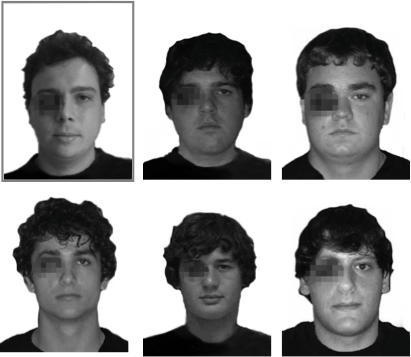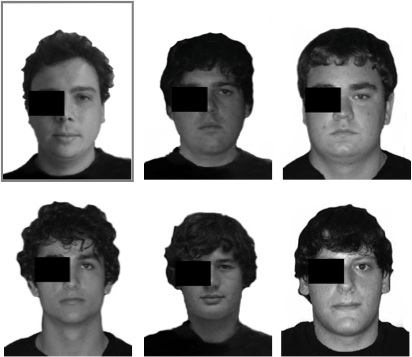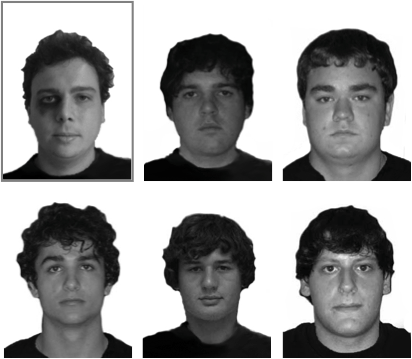05 Aug Witnesses More Likely to Confuse Innocent and Guilty Suspects When One Member of Lineup Has Distinctive Feature
MedicalResearch.com Interview with:
Melissa F. Colloff PhD student and
Kimberley A. Wade PhD,
Department of Psychology
University of Warwick
MedicalResearch.com: What is the background for this study?
Response: Eyewitnesses of crimes often have to attempt to make identification decisions as to whether the police suspect is, or is not, the real culprit of the crime. In an identification parade (UK), or a lineup (US), the suspect is presented alongside similar-looking people (who are known to be innocent) and the witness has to identify the real culprit if he or she is there, or state that the real culprit is not present.
Eyewitness identification decisions can be very influential in how a case progresses through the criminal justice system. An incorrect identification can result in a guilty person going free, or an innocent person being charged of a crime they did not commit. So generally speaking, our research investigates which identification procedures enhance a person’s ability to identify a guilty suspect.
In our study, we wanted to find out how the police should accommodate suspects with distinctive facial features (e.g., tattoos, scars, piercings, bruising) in lineups. If the police suspect stands out in a lineup because he has a distinctive feature, this is not a good test of the witness’s memory. The witness might pick the suspect simply because it is obvious that he is the focus of the police investigation. Alternatively, the witness might pick the suspect just because he is the best match—but not necessarily an exact match—to their memory of the culprit, compared to the other lineup members. Basically, if a distinctive suspect stands out, a witness is likely to pick the distinctive suspect, even if he is not the real culprit. Estimates suggest that over one third of all police suspects have distinctive facial features. But police guidelines on how to accommodate distinctive suspects in lineups are not currently guided by research—in fact, there are thousands of studies on lineups, but only a handful that explore lineups for distinctive suspects.
In our study, we examined three techniques currently used by the police to prevent distinctive suspects from standing out and compared these techniques to doing nothing to prevent the distinctive suspect from standing out. Let’s say the suspect has a black eye. One thing the police might do is digitally add a black eye to all of the other faces in the lineup (i.e., “replication”). Or, they might cover up the suspect’s black eye and cover up a similar area on the faces of the other lineup members. In practice, the police can cover up the feature by either overlaying the area of the feature with a black block (i.e., “block”), or by pixelating the area of the feature (i.e., “pixelation”). In our study, we compared replication, pixelation and block lineup techniques against lineups in which nothing was done to prevent a distinctive suspect from standing out—that is, lineups in which the suspect was the only person with a black eye.
MedicalResearch.com: What are the main findings?
Response: When the police suspect was the only person with the distinctive feature, people were likely to pick the suspect regardless of whether that person was innocent or guilty. But what’s worse, we found that when the suspect was the only person with the distinctive feature, this actually made people more likely to confuse who was guilty and who was innocent. That’s because people weren’t really using their memory of the culprit’s face, they were simply picking the only plausible option – the only person in the lineup with the black eye that they remembered from the crime video – and this made it difficult for people to tell the difference between the real culprit and an innocent suspect who had a similar feature. Worryingly, people also made high confidence errors—they selected an innocent suspect yet were confident that they got it right. This finding warrants concern because we know from other research and real-life cases, that highly confident witnesses can be very influential in the courtroom.
MedicalResearch.com: What should readers take away from your report?
Response: More research is needed before scientists can make practical recommendations about how to accommodate distinctive suspects in lineups. But our results show that it’s crucial to prevent distinctive suspects from standing out in lineups. Interestingly, we found that all three techniques currently used by the police were equally effective. This means that there are multiple ways in which the police can accommodate distinctive suspects in lineups. It doesn’t seem to matter if you add the suspect’s feature to the other faces, or cover up the suspect’s feature using a block or a pixelated area – all three methods are much better than merely leaving the distinctive suspect to stand out.
MedicalResearch.com: What recommendations do you have for future research as a result of this study?
Response: We found that all three techniques currently recommended by police guidelines were equally effective at fostering accurate identification decisions. But future research should examine whether the current guidelines need adjusting under particular circumstances. For example, no research has examined the best lineup technique to use in circumstances in which a culprit does not have a distinctive feature at the time of the crime, but the police suspect does have a distinctive feature at the time of the lineup. There are also no guidelines regarding what information should be provided to the witness about how the images have been digitally altered. We are currently examining these issues with the ultimate goal of creating more comprehensive guidelines.
MedicalResearch.com: Thank you for your contribution to the MedicalResearch.com community.
Note: Content is Not intended as medical advice. Please consult your health care provider regarding your specific medical condition and questions.
More Medical Research Interviews on MedicalResearch.com
[wysija_form id=”5″]
Last Updated on August 5, 2016 by Marie Benz MD FAAD




